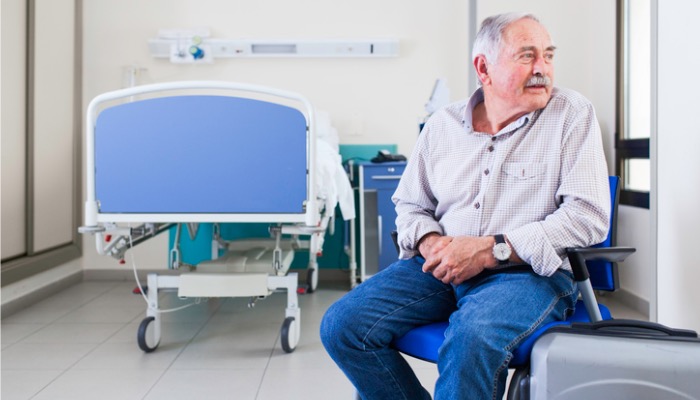Reducing discharge delays to free up bed space
In Insight
Follow this topic
Bookmark
Record learning outcomes

Accessibility to social care isn’t the only issue causing bed blocking across the NHS. Pharmacy has a crucial role to play too, including by streamlining through automation the process for take home (TTO) medication, says Mojgan Sani, chief pharmacist at North Tees & Hartlepool NHS Foundation Trust.
The latest annual inpatient survey by the Care Quality Commission found 73 per cent of patients “whose discharge had been delayed” said the main reason was “that they had to wait for medicines”. Of the 76,668 patients who responded more than a quarter said they had waited for more than four hours to be discharged from hospital.
It’s a worrying statistic but it will come as no surprise to many working within pharmacy. At my previous Trust, a process audit revealed that medication could be sat within pharmacy for up to four hours waiting for a porter to take it to the ward. That same audit found only a third of medication taken to the wards was actually collected to give to the patient within an hour.
The traditional hospital TTO process can be summarised in five simple steps;
- A doctor prescribes the patient medication to take home
- Pharmacy check that medication
- Pharmacy dispenses the TTO
- A porter collects and delivers the medication to the ward
- The nurse advises the patient on how to take the medication and discharges them from hospital.
The biggest time delay occurs between stages three and five. At North Tees we have found a leaner way to do this. Instead of medication being dispensed on a case by case basis, regular TTO medication is kept on the wards in pre-labelled packs, stored in a dedicated section of a secure Omnicell automated dispensing cabinet, ready to quickly dispense when required.
Once a patient’s medication has been prescribed it is checked on the ward by the onsite pharmacist. The nurse then logs in to the secure cabinet using their thumbprint and a guiding light system directs them to the medication they need for their patient. Only the part of the cabinet storing that particular medication is unlocked, removing any risk of error. The nurse needs to write the patient's name and the date on the pack, advise the patient how to take it and can release them home.
This process could easily be replicated across NHS hospitals to free up beds more quickly and improve the patient experience. Our delays in transfer of care are now at their lowest levels in four years and pharmacy has played a crucial part in that reduction.
Of course, it’s not advisable to rely on technology alone. To ensure we get the best out of the systems, we have a pharmacy technician who is responsible for managing the process which includes training end users. The time and cost saving benefits from both these resources far outweighs the investment costs.
As well as helping to streamline discharge processes, this system makes the medication management process safer across the hospital. Storing medication in secure cabinets which guide nurses to the correct medication reduces the risk of picking errors. It supports better stock management and makes sure the right medication is available when and where needed. It also frees up nursing time which can be redirected back into face to face patient care. Nursing staff have their own logins for the cabinets - no more time spent key hunting - and they can also save time ordering controlled drugs (CDs), as cabinets automatically trigger orders when stock is running low.
The pharmacy team have realised legal and security benefits. The ordering process for CDs is regulated and requires check and balances. The automated cabinet system handles the checks and balances required in CD ordering, while pharmacy no longer has to waste time sorting out errors and urgently trying to replace stock on wards through greater visibility of stock and its location.
North Tees currently has Omnicell cabinets in 20 per cent of its clinical areas, but is looking to roll out to additional parts of the hospital. Technology can really help to streamline workflows, improve patient safety, release nursing time to care and deliver financial efficiencies – worthy of a 21st century NHS.
Automation in community pharmacy here
